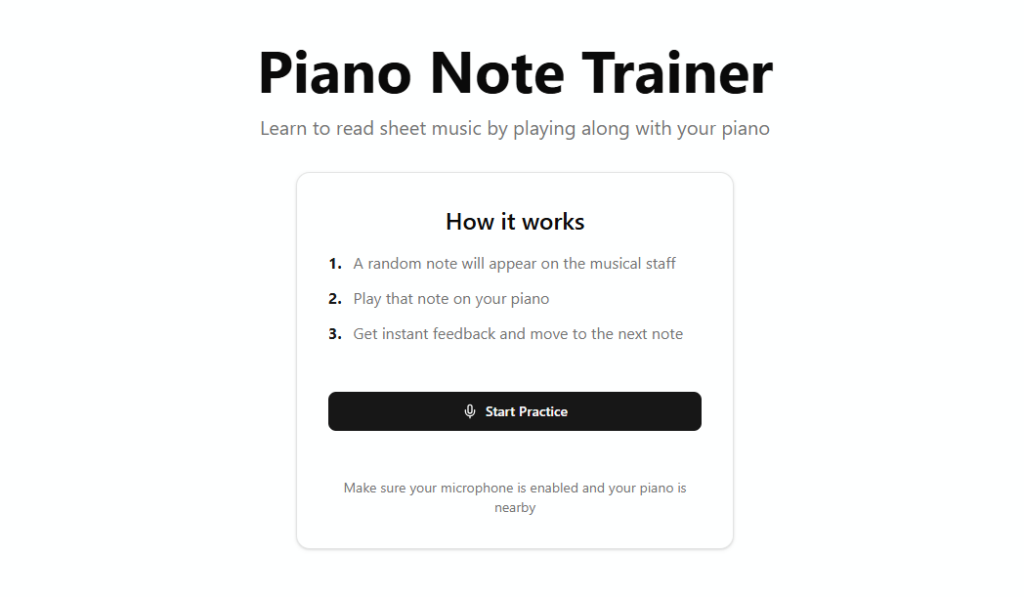I sat down this morning to start learning piano. Again. Everyone else in our house plays beautifully, whereas my childhood music education was cut tragically short when my teacher tried to stab the woman over the road with a breadknife.
Since then I’ve tried to learn several times over the years, and have invariably followed the same routine each time:
- Sit down at the piano
- Look at sheet music
- Give up
Because really, who designed sheet music? It’s the most stupid, arbitrary, user-unfriendly thing. It’s the wrong way round, for a start — the keys go across but the notes go up and down? The notation for the right hand is different to the left hand? Sometimes notes are different notes — ooh, but you have to look back to the start of the line to know that. Argh.
But anyway, this morning I broke the cycle and moved onto the next stage of my learning journey:
- Make an app to help myself learn piano
Now some people out there — cynics! — might call this procrastination. But I say to those people, in the manner of Bilbo greedily clutching the ring of power: why shouldn’t I? And I’ve done it now anyway, so the whole thing is academic.
What I want is feedback; something to join the dots in my head between the notes in the manuscript and the keys on the piano — literally just a simple training toy I could do over and over until it stuck. So I popped the outline into v0 (an AI prototyping tool) and, an hour of fiddling, prompting and debugging later, we have this:

It’s super simple for now, crappy AI code and very little in the way of UX — designed for the sole purpose of getting me over that first hump of matching the notes on the score to the keys — and is surprisingly effective! I spent half an hour trying it this morning and could actually feel it sinking in this time. It’s not going to make me Mozart overnight, but it’ll definitely help me take the first step.
And of course, once you’ve built something like this, your mind starts racing: what next? Maybe sequences of notes, left-hand mode for that weird second schema, maybe even chords or both hands together. (I wonder how well I can detect multiple frequencies at once?)
What I love most, though, is that we live in a time where you can just have an idea like this and make it. No client, no publisher, no waiting for permission — just an idle thought, a cup of tea, and an hour later there’s a working prototype that’s genuinely useful. Fun times!